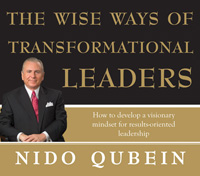Controlling Change
If a company is going to stay in business, it has to change, and that can be scary.
Many people see change as threatening. To them, it is the destroyer of what is familiar and comfortable rather than the creator of what is new and exciting. Unfortunately, comfort can be the enemy of excellence. It can even lead to corporate death.
A Navy aviator once told me that many pilots have died because they stayed with their disabled aircraft too long. They preferred the familiarity of the cockpit to the unfamiliarity of the parachute, even though the cockpit had become a death trap and the parachute had become a ticket to life.
Many businesses have died because their people preferred the familiar but deadly old ways to the risky but rewarding new ways. We must teach them that to stand pat is to perish.
The secret to successful change is to make it controlled change. If the change is well- planned and under control, the people affected will have a sense of stability amid change, and that can be reassuring.
One of the most important things you can do is to explain the reasons for the change. Change is easier to take when people can see a rational behind it.
Another way of easing anxiety is to show how advance planning minimizes risks. Let people know what to expect, step by step. No surprises, no alarm.
Rank-and-file employees need to know that management is fully behind the change. If they're learning to do things a new way, they need assurance that somebody up the management ladder won't come by later and say "That's the wrong way." Commend and recognize employees who master the new way.
Planned changes usually move through three stages: softening, reshaping and restabilizing.
During the softening stage, employees have to unlearn old habits. During the reshaping phase, new ways must be implanted. During restabilization, these new ways must become new habits.
You can smooth the way toward change through pilot projects that enable employees to go through trial runs before "going live." You can also find people who are familiar with the new ways and let them model them for the rest of your people.
I've learned, through consulting with companies implementing change, that the job is never finished. Successful companies look for ways to institutionalize change. When a company's people are oriented to change and educated in effective ways to bring it about, it's geared up for the future.
copyright Nido R Qubein
For
more on this topic, we recommend the following: |
||||
|
|
|||
Was this article of help to you? |
||||


